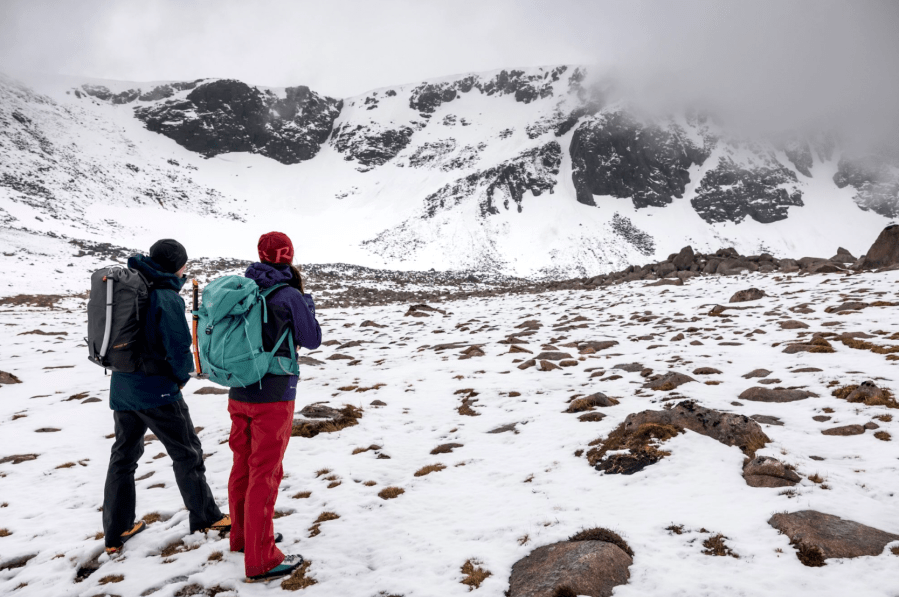This article on what to pack for winter hillwalking is sponsored by our friends at Glenmore Lodge.
Christmas is coming! Too soon already. I am making a list, I’m checking it twice… let’s see what Santa can bring me for hill walking this winter. It is that time of year when the air is getting colder, the nights are getting longer and I start thinking about the winter mountains again. What to carry is key to success! I run through a quick check list in my head, as I am packing my rucksack the night before.
Main image: Santa doesn’t always deliver bluebird days – we must pack our sacks accordingly | Credit: Ed Smith
I tend to group them in pairs, I find it easier to remember that way: Ice axe and crampons. Map and compass. Food and drink. Hat and gloves. Group shelter and first aid kit. Waterproofs and spare warm jacket.
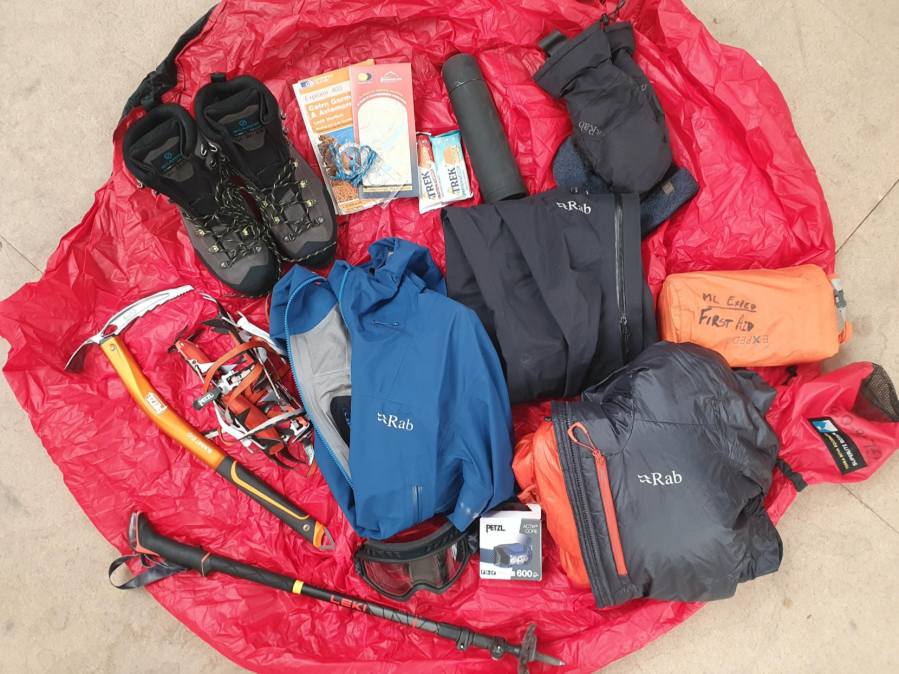
And then the other bits that don’t work in pairs quite as well – ski googles, mobile phone, spare map, head torch, walking pole. As I lay all my kit out, I check my gloves. I am sure there weren’t that many holes in them last time I used them. I might take my crampons out to the shed to give them a quick sharpen. Oh look… there’s that old flat chocolate bar in the bottom of my winter rucksack!
Okay, time for that second check through. So, what am I carrying for a day’s hill walking in winter?
Rucksack
Something in the 30 to 40 litres range is perfect for my pack. I prefer a nice simple design, not too many pockets to catch on rocks or collect snow, and the 30+ size is big enough for the extras we need in winter without having to force everything in tightly. Packs are never truly waterproof, so store things in a few roll top dry bags to keep things dry and organised.
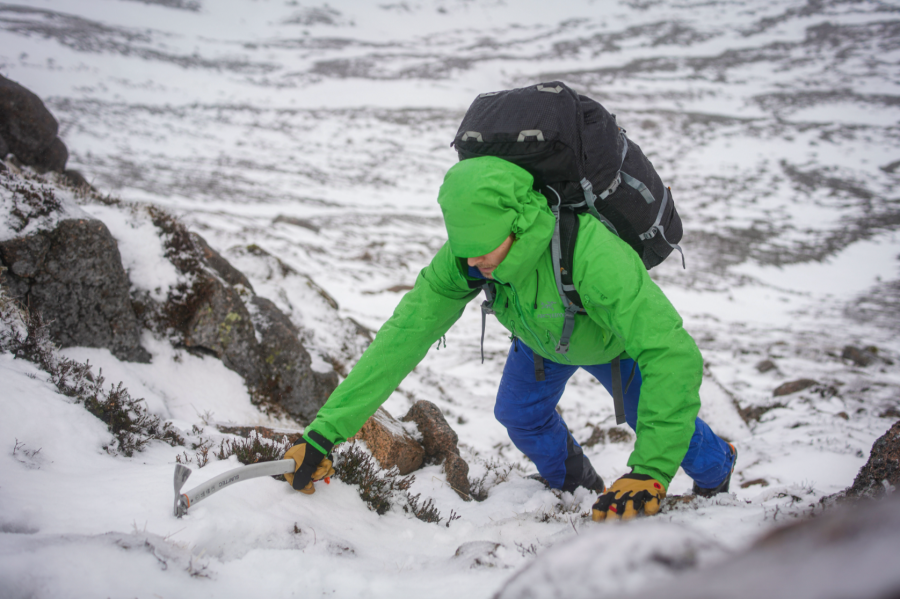
Ice axe
Not too heavy, not too light, not too long and not too short. For me, a Petzl Summit Evo ice axe fits the bill. It has a bit of heft for firm placement, a gentle curve for confident use on steeper slopes and a big adze for cutting the odd step or a bit of a platform to take a breather on.
Crampons
I prefer the durability of steel rather than aluminium – hopefully they’re not too rusty after packing them away last winter. I double check they still fit my winter boots – nothing may have changed but I always check crampons in the warm and dry, rather than out in the cold.
Map
I will print my map for the day off and fold it small so I can fit it in my waterproof chest pocket. You can laminate these if you use one area particularly often, or they work equally well inside an A5 sized map case. I also carry a spare map in my pack, or make sure we have a spare within the group.
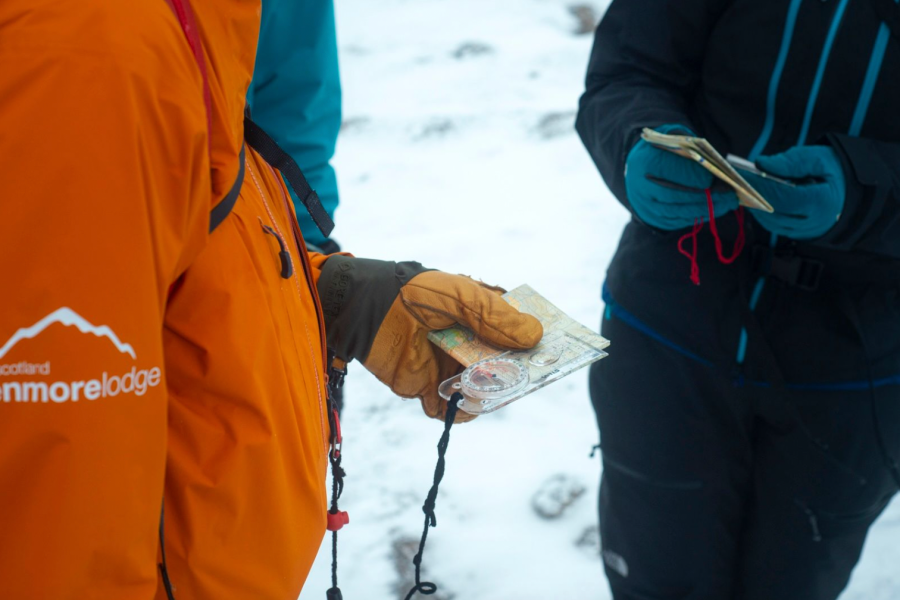
Compass
Check it still points north! Is it easy enough to use with gloves on? Once I’ve had a quick play, I clip it into the same pocket as the map.
Lunch and my Nalgene
My Nalgene goes into a cozy (the brand make a neoprene one… or you can make your own from foam and duct tape) so that if I fill it with hot squash in the morning it will not freeze except by the afternoon of the coldest days! Take food you enjoy and is easy to snack on with gloves – rolls, pies and pasties rather than salad boxes.
Hat, gloves and spares
For when the first pair are wet and cold or blown away… it might not be yours, it might be a frosty friend.
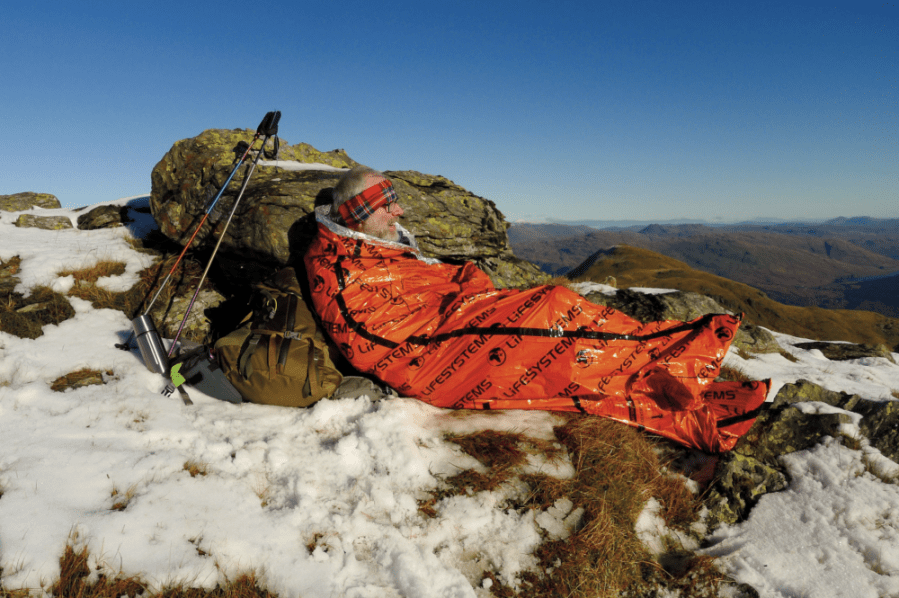
Group shelter
Also known as a bothy bag, a KISSU, or an emergency shelter, it’s basically a tent without poles. If you need to get out of the weather or fix a problem, it is a life saver!
First aid kit
I try to keep my emergency kit and first aid kit simple. Something to stop bleeding, pain killers, compeed for blisters and a small roll of duct tape. Don’t forget any personal medication.
Waterproof jacket and trousers
I will often just choose power stretch tights and waterproof trousers from the start on a cold day. My hardshell jacket has a big enough chest pocket for both map and compass.
Spare warm jacket
In winter I opt for a synthetic-filled layer, squeezed into a drybag. I size it large enough so I can put it over my waterproof jacket. No one want to take their outer layer off on a cold windy mountain.
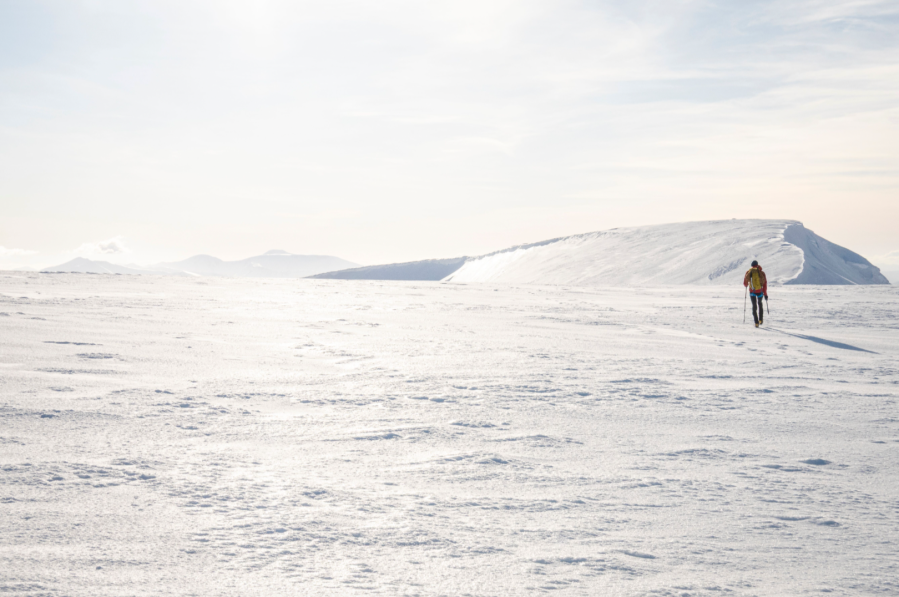
Ski googles
Have you have ever been pelted in the eyes with hard snowflakes in a 40mph wind? If so, you will not forget the googles again! Opt for a clear tint, which make it easier to descend in the dark – with limited daylight in winter this is quite normal.
Head torch
Check the head torch before every outing, making sure it’s fully charged. It can be worth carrying a small spare, too, rather than faffing with spare batteries… just in case.
Walking pole
I prefer to use just one trekking pole, which leaves a hand free for the compass or ice axe.
Mobile phone
This is best kept warm in my inside jacket pocket so the battery lasts, but not right next to my compass. The magnet in the speaker will affect the compass needle.

